Related Research Articles

Francesco Maurizio Cossiga was an Italian politician. A member of Christian Democracy, he was prime minister of Italy from 1979 to 1980 and the president of Italy from 1985 to 1992. Cossiga is widely considered one of the most prominent and influential politicians of the First Italian Republic.

Christian Democracy was a Christian democratic political party in Italy. The DC was founded on 15 December 1943 in the Italian Social Republic as the nominal successor of the Italian People's Party, which had the same symbol, a crusader shield. As a Catholic-inspired, centrist, catch-all party comprising both centre-right and centre-left political factions, the DC played a dominant role in the politics of Italy for fifty years, and had been part of the government from soon after its inception until its final demise on 16 January 1994 amid the Tangentopoli scandals. Christian Democrats led the Italian government continuously from 1946 until 1981. The party was nicknamed the "White Whale" due to its huge organisation and official colour. During its time in government, the Italian Communist Party was the largest opposition party.
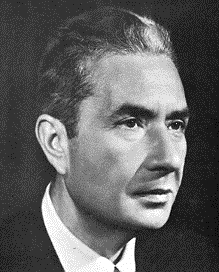
Aldo Romeo Luigi Moro was an Italian statesman and prominent member of Christian Democracy (DC) and its centre-left wing. He served as prime minister of Italy in five terms from December 1963 to June 1968 and from November 1974 to July 1976.

Amintore Fanfani was an Italian politician and statesman, who served as 32nd prime minister of Italy for five separate terms. He was one of the best-known Italian politicians after the Second World War and a historical figure of the left-wing faction of Christian Democracy. He is also considered one of the founders of the modern Italian centre-left.

Giulio Andreotti was an Italian politician and statesman who served as the 41st prime minister of Italy in seven governments, and was leader of the Christian Democracy party and its right-wing; he was the sixth-longest-serving prime minister since the Italian unification and the second-longest-serving post-war prime minister. Andreotti is widely considered the most powerful and prominent politician of the First Republic.

Attilio Ruffini was an Italian politician.
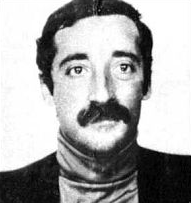
Mario Moretti is an Italian terrorist and convicted murderer. A leading member of the Red Brigades in the late 1970s, he was one of the kidnappers of Aldo Moro, the president of Italy's largest political party Democrazia Cristiana, and several times premier. In 1978, Moretti confessed to killing Moro.
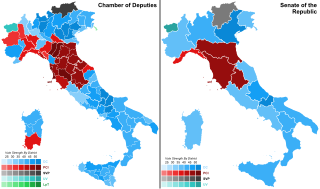
The 1979 Italian general election was held in Italy on 3 June 1979. This election was called just a week before the European vote: the failure to hold the two elections at the same time caused much criticism for wasting public money.
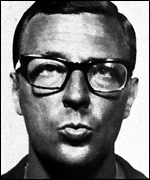
Carmine "Mino" Pecorelli was an Italian journalist, shot dead in Rome a year after former prime minister Aldo Moro's 1978 kidnapping and subsequent killing. He was described as a "maverick journalist with excellent secret service contacts". According to Pecorelli, Aldo Moro's kidnapping had been organized by a "lucid superpower" and was inspired by the "logic of Yalta". Pecorelli's name was on Licio Gelli's list of Propaganda Due masonic members, discovered in 1980 by the Italian police.

Benigno Zaccagnini was an Italian politician and physician.

Buongiorno, notte is an Italian film released in 2003 and directed by Marco Bellocchio. The title of the feature film, Good Morning, Night, is taken from a poem by Emily Dickinson.
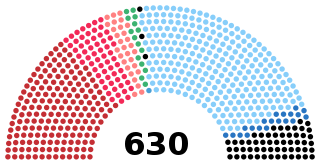
The Legislature VI of Italy was the 6th legislature of the Italian Republic, and lasted from 25 May 1972 until 4 July 1976. Its composition was the one resulting from the general election of 7 May 1972.

The kidnapping and murder of Aldo Moro, also referred to in Italy as the Moro case, was a seminal event in Italian political history. On the morning of 16 March 1978, the day on which a new cabinet led by Giulio Andreotti was to have undergone a confidence vote in the Italian Parliament, the car of Aldo Moro, former prime minister and then president of the Christian Democracy party, was assaulted by a group of far-left terrorists known as the Red Brigades in via Fani in Rome. Firing automatic weapons, the terrorists killed Moro's bodyguards — two Carabinieri in Moro's car and three policemen in the following car — and kidnapped him. The events remain a national trauma. Ezio Mauro of La Repubblica described the events as Italy's 9/11. While Italy was not the sole European country to experience extremist terrorism, which also occurred in France, Germany, Ireland, and Spain, the murder of Moro was the apogee of Italy's Years of Lead.

Valerio Morucci is an Italian terrorist, who was a member of the Red Brigades and who took part in the kidnapping and assassination of Aldo Moro in 1978.
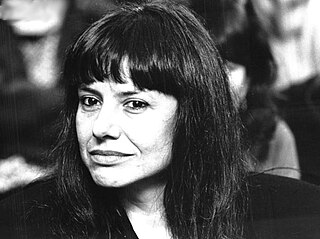
Adriana Faranda is an Italian former terrorist, who was a member of the Red Brigades during the kidnapping of Aldo Moro.

Prospero Gallinari, also known as "Gallo", was an Italian terrorist, a member of the Red Brigades (BR) in the 1970s and 1980s.

The Red Brigades was a Marxist–Leninist armed terrorist organization, which was operating as a far-left guerilla and terrorist group based in Italy. It was responsible for numerous violent incidents during Italy's Years of Lead, including the kidnapping and murder of Aldo Moro in 1978. A former prime minister of Italy through the Organic centre-left, the murder of Aldo Moro was widely condemned, as was the murder of left-wing trade unionist Guido Rossa in January 1979. Sandro Pertini, the then left-wing president of Italy, said at Rossa's funeral: "It is not the President of the Republic speaking, but comrade Pertini. I knew [the real] red brigades: they fought with me against the fascists, not against democrats. For shame!"

Five Moons Square, also known as Five Moons Plaza and Piazza of the Five Moons, is a 2003 political thriller film written and directed by Renzo Martinelli, who had also directed Porzûs (1997) and Vajont (2001). It is inspired by Italian politician Aldo Moro's kidnapping and murder by the Red Brigades (BR) terrorist group; the film presents a possible reconstruction of this story within a fictive conspiracy theory.

Eleonora Chiavarelli was an Italian woman who was the spouse of Aldo Moro, a politician who was kidnapped and murdered in 1978.
In May 1978, Aldo Moro, a Christian Democracy (DC) statesman who advocated for a Historic Compromise with the Italian Communist Party, (PCI), was murdered after 55 days of captivity by the Red Brigades (BR), a far-left terrorist organization. Although the courts established that the BR had acted alone, conspiracy theories related to the Moro case persist. Much of the conspiracy theories allege additional involvement, from the Italian government itself, its secret services being involved with the BR, and the Propaganda Due (P2) to the CIA and Henry Kissinger, and Mossad and the KGB.
References
- ↑ "Bellocchio si confessa: «È stato Camilleri a suggerirmi di fare il regista»". Open.online. 18 January 2020. Retrieved 18 May 2023.
- ↑ "Al cinema "Esterno notte", la prima serie di Bellocchio sul caso Moro". Today.it. 17 May 2022. Retrieved 18 May 2023.
- ↑ "David di Donatello 2023, tutti i premi assegnati". raicultura.it. Retrieved 18 May 2023.